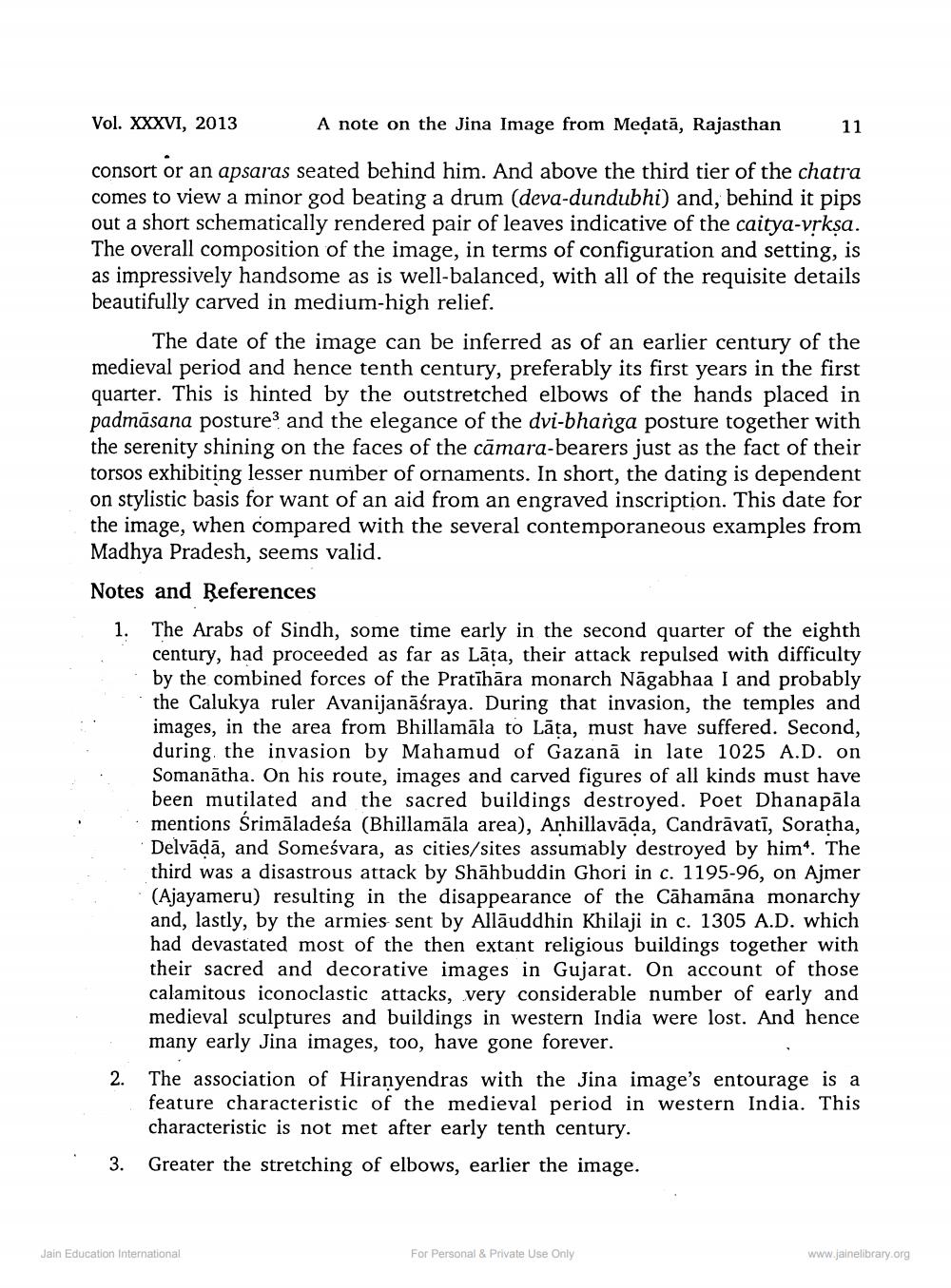________________
Vol. XXXVI, 2013
A note on the Jina Image from Meţată, Rajasthan
11
consort or an apsaras seated behind him. And above the third tier of the chatra comes to view a minor god beating a drum (deva-dundubhi) and, behind it pips out a short schematically rendered pair of leaves indicative of the caitya-vsksa. The overall composition of the image, in terms of configuration and setting, is as impressively handsome as is well-balanced, with all of the requisite details beautifully carved in medium-high relief.
The date of the image can be inferred as of an earlier century of the medieval period and hence tenth century, preferably its first years in the first quarter. This is hinted by the outstretched elbows of the hands placed in padmāsana posture and the elegance of the dvi-bhanga posture together with the serenity shining on the faces of the camara-bearers just as the fact of their torsos exhibiting lesser number of ornaments. In short, the dating is dependent on stylistic basis for want of an aid from an engraved inscription. This date for the image, when compared with the several contemporaneous examples from Madhya Pradesh, seems valid. Notes and References 1. The Arabs of Sindh, some time early in the second quarter of the eighth
century, had proceeded as far as Lāta, their attack repulsed with difficulty by the combined forces of the Pratīhāra monarch Nāgabhaa I and probably the Calukya ruler Avanijanāśraya. During that invasion, the temples and images, in the area from Bhillamāla to Lāta, must have suffered. Second, during the invasion by Mahamud of Gazanā in late 1025 A.D. on Somanātha. On his route, images and carved figures of all kinds must have been mutilated and the sacred buildings destroyed. Poet Dhanapāla mentions Śrimāladeśa (Bhillamāla area), Anhillavāda, Candrāvatī, Soratha, Delvādā, and Someśvara, as cities/sites assumably destroyed by him. The third was a disastrous attack by Shāhbuddin Ghori in c. 1195-96, on Ajmer (Ajayameru) resulting in the disappearance of the Cāhamāna monarchy and, lastly, by the armies sent by Allāuddhin Khilaji in c. 1305 A.D. which had devastated most of the then extant religious buildings together with their sacred and decorative images in Gujarat. On account of those calamitous iconoclastic attacks, very considerable number of early and medieval sculptures and buildings in western India were lost. And hence
many early Jina images, too, have gone forever. 2. The association of Hiranyendras with the Jina image's entourage is a
feature characteristic of the medieval period in western India. This
characteristic is not met after early tenth century. 3. Greater the stretching of elbows, earlier the image.
Jain Education International
For Personal & Private Use Only
www.jainelibrary.org




